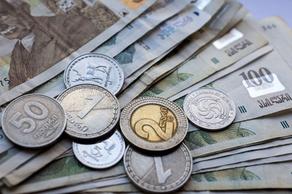
President of the National Bank of Georgia Koba Gvenetadze has published a post on Facebook regarding Georgia's national currency exchange rate today.
As he says, the short-term fluctuation of the exchange rate is characteristic for all currencies with the floating exchange regimes, and the fluctuation amplitude drops if the market volume increases.
He says the number of players is higher, with the number of transactions more frequent.
Gvenetadze reports that only banks do not shape the GEL exchange rate.
"The exchange rate is formed in the foreign exchange market, in which someone sells currency, and someone buys it. Banks buy and sell currency for their needs (issuing loans and others), but it is done on customers' instructions. It means that the foreign exchange market participants create the supply/demand for the currency. Market participants are thousands of companies and individuals. In real life, either the supply of money or the need for it prevails. And it is this imbalance that causes the exchange rate to change. In a free market, at the time of depreciation, the exchange rate first depreciates unnecessarily, and then unnecessarily strengthens, and others, until it reaches a new indicator. Let's say the demand for currency exceeds supply. At this point, the course begins to depreciate. The people who need GEL will refrain from selling currency because they will wait for the best price. As a result, the supply of money decreases. Those who have to buy currency are trying to buy it as quickly as possible so that later they will not overpay for it even more,'' Koba Gvenetadze's post reads.
"Consequently, the demand for currency is increasing. As you can see, at the initial stage of the exchange rate adjustment, the imbalance between supply and demand increases rather than decreases, further decreasing the exchange rate. And this process continues until the supply side decides that the lari will no longer depreciate. At that moment, those who need GEL start selling currency, i.e., supply is growing. As a result of this, the lari begins to strengthen, and the situation changes in the opposite direction. The demand side already decides that the lari has risen in price too much and stops selling the currency. Then the strengthening of the course finishes. The described process is a natural mechanism that restores equilibrium in the market and operates wherever there are a free market and a floating exchange rate," Koba Gvenetadze said in his Facebook post.































Bela Gelashvili
News Author